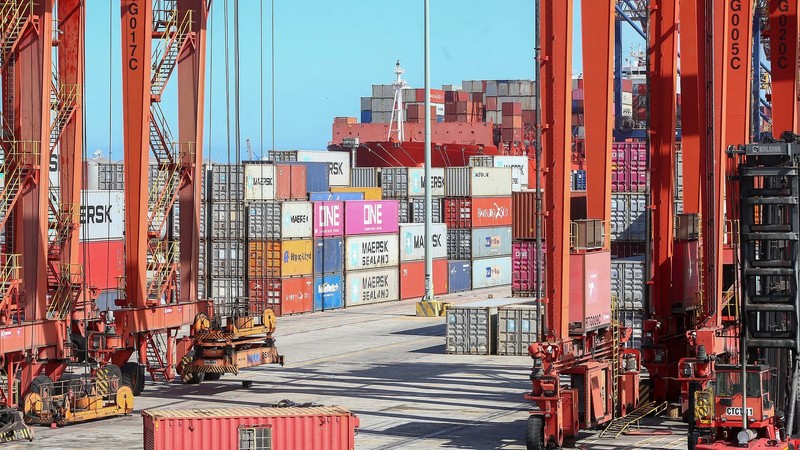South African economists are voicing serious concerns as the International Monetary Fund (IMF) holds steady on its meagre growth forecasts for the country, projecting a mere 1% growth in 2025 and 1.3% in 2026.
This cautious stance, reiterated in the latest World Economic Outlook (WEO) published on Tuesday, reflects the IMF’s assessment that the nation has made insufficient progress in implementing crucial structural reforms, particularly in critical network industries such as logistics and energy.
The latest estimates mirror the IMF’s April predictions, which marked a notable 0.5 percentage point reduction due to sluggish activity among key trading partners and the mounting pressure of rising US tariffs.
The forecasts contrast with those from the National Treasury, which anticipates a growth rate of 1.4% in 2025 and 1.6% in 2026, as well as the South African Reserve Bank’s optimistic outlook of 1.2% growth for 2025 rising to 1.8% by 2027.
These discrepancies highlight a deeply concerning divergence between South Africa’s economic trajectory and that of its neighbours in sub-Saharan Africa.
Momentum Investments chief economist, Sanisha Packirisamy, emphasised that South Africa was grappling with chronic structural constraints that severely limit its growth potential.
“While regional peers are capitalizing on demographic advantages, commodity benefits, and reform-induced growth, South Africa continues to struggle with its own shortcomings,” she said.
One of the primary hurdles identified is the inefficiency in electricity transmission and distribution, despite appreciable advancements in generation.
Additionally, persistent bottlenecks in logistics—particularly regarding freight rail and port operations—remain significant obstacles to both output and investment.
“Reform is underway, but implementation has been sluggish, with only a muted growth impact in sight. With entrenched issues such as high unemployment, inequality, and a constrained fiscal landscape, domestic demand and policy flexibility are further restricted,” Packirisamy noted.
Supporting this view, Investec chief economist Annabel Bishop said the IMF’s forecast was in line with theirs at 0.9% for 2025 on the poor growth in the first quarter, and 1.5% for 2026 based on weakening global growth environment and insufficient progress at Transnet.
Bishop said progress on improving Transnet’s capacity, on both the rail and port sides to end the domestic freight crisis that weakens South Africa’s growth rate, continued to be too slow.
“Critical challenges faced by Transnet … that have macro-economic implications, have led to muted economic growth for the country, including unreliable supply of electricity, increased crime and rail underinvestment,” Bishop said.
“South Africa’s growth this year is expected above 2024’s weak 0.6%, but much depends Transnet’s capacity to lift its freight delivery substantially further for economic growth to near 3.0%, which still only likely by the end of this decade.”
In stark contrast to South Africa’s stagnant predictions, the IMF has optimistically revised its growth forecast for the Sub-Saharan Africa region to a robust 4% for 2025, up from an earlier estimate of 3.8%.
Following that, the forecast for 2026 rises further to 4.3%, indicating a more favourable economic climate for several nations within the region.
Deniz Igan, chief of the IMF Research Department’s World Economic Studies Division, said they were seeing continued subdued growth for Sub-Saharan Africa.Igan said external conditions, particularly for Sub-Saharan Africa, remained quite challenging.
“We talked about financial conditions, whether there would be a reset due to higher interest rates globally and tightening of global financial conditions, especially for high-debt countries, that would be a risk. But also, there are domestic risks for Sub-Saharan African economies, regional conflicts, social unrest and climate change are perhaps a few to mention,” Igan said.
“Given the challenges Sub-Saharan Africa is facing, [structural reforms] is an important pillar for renewed growth in the region. There is a need for broad structural and institutional reforms, further regional trade integration, more investment in infrastructure, transportation, and reform of State-Owned Enterprises, especially in the energy sector and transportation sector are the other priorities.”
BUSINESS REPORT
